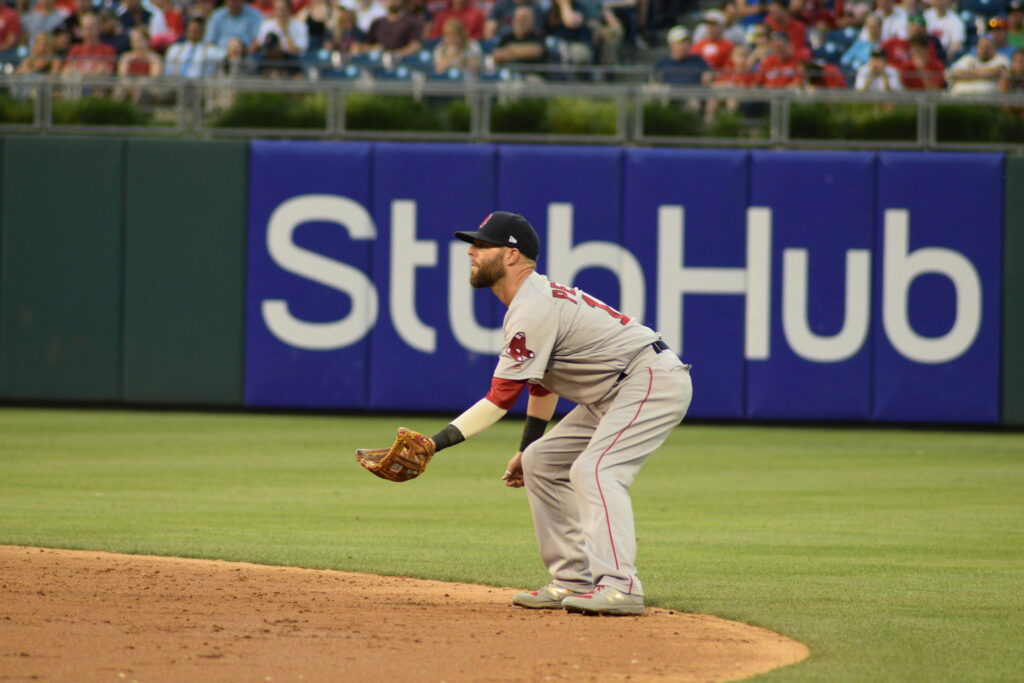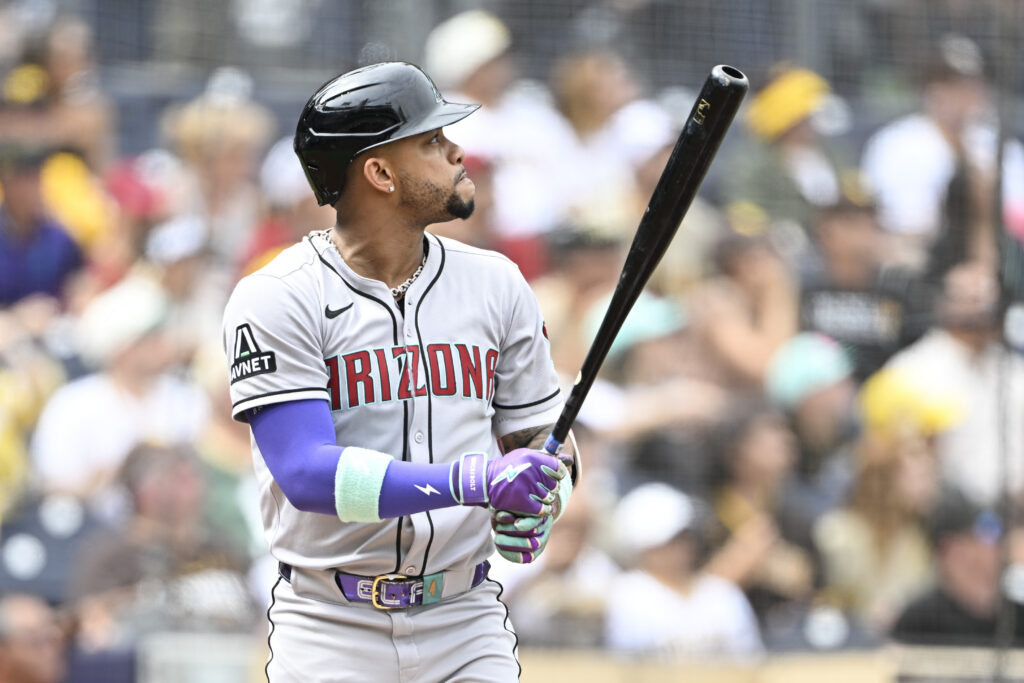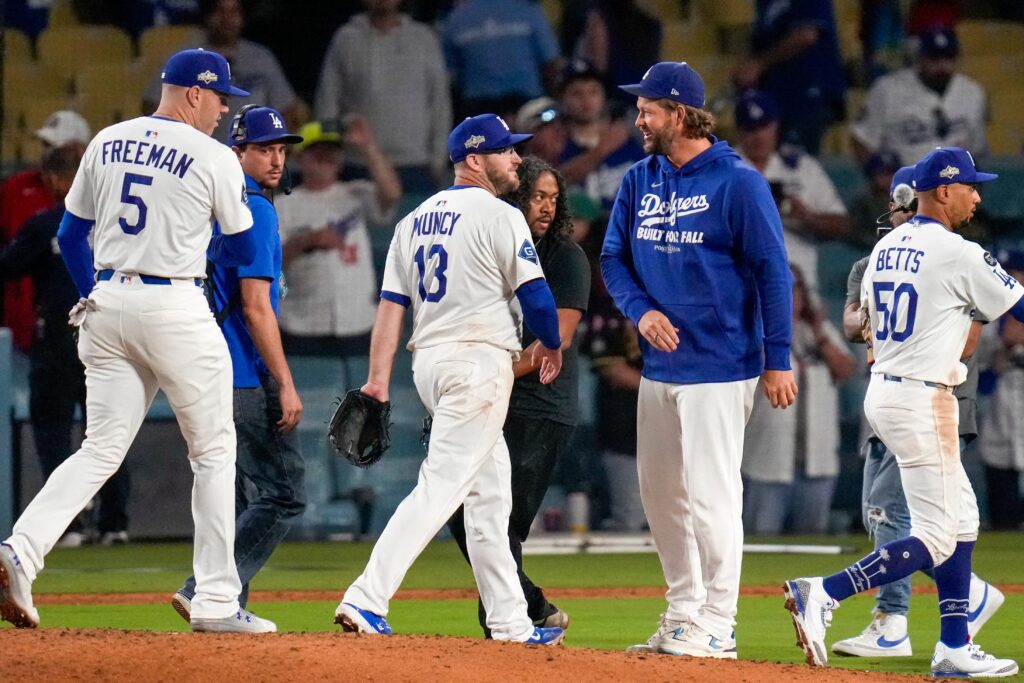This is the third article in a series that looks at the five best players at each position for the Boston Red Sox. In this installment, second basemen and shortstops.
The Red Sox middle infielders are highlighted by a pair of Hall of Famers who played during the 1930s and 40s as the starters at both positions. The depth is filled in by several players from the 21st century, although there are other second basemen and shortstops who appeared on championship-caliber teams from other eras.
The Best Middle Infielders in Boston Red Sox History
Second Basemen
Honorable Mentions – Bill Regan was a five-year starter on some bad Red Sox teams from 1926-30. He hit .270 with 611 hits and 284 RBIs in 613 games. Doug Griffin was a light hitter but a solid fielder who played with the Red Sox from 1971-77. The 1972 gold glove winner who was a reserve on the 1975 World Series team totaled 161 RBIs in 614 games with Boston. Jerry Remy spent seven years with the Red Sox (1978-84) and was an All-Star in his first season with the club when he tallied 87 runs, 162 hits, and 30 stolen bases. He hit .286 with 802 hits and 211 RBIs in 710 games with Boston.
5. Marty Barrett – Followed Griffin and Remy as a starter and was a cog in the team that went to the World Series in 1986. Barrett spent nine seasons in Boston, hitting .288 with 935 hits and 311 RBIs in 929 games. His best season was that World Series year, when he set career highs with 94 runs, 179 hits, 39 doubles, and 215 steals. Barrett had 11 hits, scored four runs and drove in five to earn ALCS MVP honors, then added 13 more hits and four more RBIs in the World Series loss to the Mets.
4. Hobe Ferris – Boston’s first starter at the position was a solid producer who led the Americans to back-to-back pennants in 1903-04. Although Ferris hit just .237 over seven seasons and was known best for his run-ins with umpires, he managed 875 hits and 418 RBIs in 983 games. In the first World Series in 1903, he hit .290 (9-for-31) with six runs batted in to help Boston defeat Pittsburgh. Ferris ranks seventh in franchise history with 77 triples.
3. Billy Goodman – While he spent three seasons at first base and one in left field, Goodman spent the majority of his 11-year Boston career (1947-57) at second base. He was a two-time All-Star, but his best season did not win him any personal accolades. Goodman finished second in the MVP voting in 1950 after leading the league with a .354 average to go along with 91 runs, 150 hits, and a career-high 68 runs batted in. The slick fielder hit .306 and had 688 runs, 1,344 hits, and 464 RBIs in 1,177 games.
2. Dustin Pedroia – He was a well-liked player and a throwback, known for playing the game hard and getting his uniform dirty. Pedroia turned back the clock to an age when being a star didn’t mean you had to have gaudy power numbers. He hit .317 and was named Rookie of the Year in Boston’s title year of 2007. The following season, Pedroia led the league with 118 runs and 213 hits, and 54 doubles to add to his 17 home runs, 83 runs batted in, 20 stolen bases and.326 as he won the American League’s MVP award.
The four-time All-Star, four-time gold glove winner, and 2008 silver slugger honoree was a catalyst on two Red Sox championship teams (2007 and 2013), hitting five home runs and driving in 25 runs in 51 career postseason games. Pedroia ranks sixth in franchise history in doubles (394) and stolen bases (138), eight in hits (1,805) and total bases (2,649), and tenth in runs (922). He hit .299 with 140 home runs and 725 RBIs in 1,512 games over 14 years.
However, Pedroia’s final two seasons were lost due to knee injuries that led to six surgeries, including a partial knee replacement. Although the Red Sox won the World Series in 2018, he played just three games all season and six more the following year. Pedroia officially retired in 2021.
1. Bobby Doerr – Like Pedroia, he spent his entire 14-year career with Boston, playing in 1,865 games (sixth-most in team history). Doerr was a nine-time All-Star and, in an era before gold gloves, he led the American League in fielding six times. He reached 150 hits nine times and 80 runs scored, 100 runs batted in, and 30 doubles six times apiece.
Despite missing the 1945 season due to military service, Doerr ranks in the top ten in several offensive categories in team history. He is fourth in triples (89), sixth in runs scored (1,094), total bases (3,270), and runs batted in (1,247), seventh in hits (2,042) and doubles (381), and eighth in home runs (223). A .288 career hitter, Doerr went to the next level in the 1946 World Series, hitting.409 (9-for-22) with three RBIs in a losing effort against the Cardinals. Although back issues caused him to retire in 1951 at age 33, Doerr was eventually elected to the Baseball Hall of Fame in 1986.
Shortstops
Honorable Mentions – Freddy Parent started alongside Ferris for seven seasons on those early Americans teams, including the pennant-winners in 1903-04. Parent hit .273 with 519 runs, 1,051 hits 386 RBIs, and 129 stolen bases in 986 games with Boston. He had three triples, scored eight runs, and drove in four during the win over Pittsburgh in the first modern World Series.
Everett Scott was a member of three championship teams during the 1910s (although he only had five hits and two RBIs combined in 16 World Series games). He had 956 hits and 349 RBIs in 1,096 games over eight seasons (1914-21). Rick Burleson was a three-time All-Star during his seven seasons with the Red Sox (1974-80). He scored at least 80 runs and registered at least 150 hits in five straight seasons, and he reached 30 doubles and 50 runs batted in three times each. The 1979 gold glove winner had 11 hits and drove in three runs during the 1975 playoffs, but the Red Sox fell to the Reds in the World Series. Overall, Burleson hit .274 with 514 runs, 1,114 hits, 203 doubles, and 360 RBIs in 1,031 games.
5. Vern Stephens – He spent just five seasons with Boston, but he had an incredible three-year stretch from 1948-50 in which he scored 352 runs, had 533 hits, smacked 98 home runs, and drove in 440 runs. The four-time All-Star hit .290 with 39 home runs (a record by a shortstop at the time) and a league-leading 159 RBIs (which tied him for the second-best single-season total in franchise history) in 1949, and the following year he posted a.295-30-144 stat line with the RBI total being the best in the American League once again. “Junior” finished his Red Sox career with 449 runs, 721 hits, 122 home runs, 562 runs batted in, and a .283 average in 660 games.
4. Xander Bogaerts – He spent 10 seasons in Boston, with a franchise-best nine seasons as a starter. During that time Bogaerts was a four-time All-Star and three-time silver slugger recipient who reached 20 home runs and 80 runs batted in four times each. He set career highs with 115 runs and 192 hits in 2016 and totaled 110 runs scored, 190 hits, and career bests with 33 home runs and 117 RBIs in 2019. The two-time champion hit five homers and drove in 16 runs in 44 career postseason games with the Red Sox. His totals include a .292 average, 752 runs scored, 1,410 hits 308 doubles (which rank ninth in franchise history), 156 home runs, and 683 RBIs in 1,264 games. He opted out of the final three years of his contract to sign a massive deal with the Padres after the 2022 season.
3. Rico Petrocelli – Although he split his career almost evenly between shortstop (774 games) and third base (727), the middle infield spot is where he better known. Petrocelli was sold both at the plate and in the field. He earned his second and final All-Star selection in 1969 after hitting .297 with 40 home runs and 97 runs batted in. He also set a record for shortstops at the time with just 14 errors the entire season, including a stretch of 44 straight games without making one.
After a 1970 season in which he hit 29 homers and drove in 103 runs, Petrocelli was asked to move to third base after the Red Sox acquired future Hall of Famer Luis Aparicio. After one season of similar production, Petrocelli started to level off before disaster struck. He was hit in the leg by a pitch which led to a hamstring injury and then got hit in the head by a pitch late in the 1974 season, which left him with inner ear issues and led to his early retirement in 1976. In 13 seasons (1963 and 65-76), Petrocelli played in 1,553 games (ninth in team history), had 1,352 hits, 210 home runs (tenth), and 773 RBIs (ninth).
2. Nomar Garciaparra – An immensely talented player of saw his career fall off after leaving Boston. After a brief stint in the majors in 1996, Garciaparra showed flashes of brilliance the following year, leading the league with 209 hits and 11 triples to go along with a .306 average, 122 runs, 44 doubles, 30 home runs, 98 RBIs, and 22 stolen bases to handily win Rookie of the Year honors.
Although he wasn’t an All-Star in 1998, he hit .323 and had 111 runs scored, 195 hits, 35 homers, and 122 runs batted in, and he finished second to Juan Gonzalez in the MVP voting. Garciaparra was a five-time All-Star who reached 100 runs scored, 190 hits, 20 home runs, and 90 runs batted in six times each. Although he had seven homers and 21 RBIs in 25 postseason games with Boston, he was not able to help the Red Sox break the Curse of the Bambino because he was sent to the Cubs as part of a four-team deal at the trade deadline in 2004.
Garciaparra was still feeling the lingering effects of a split tendon in his wrist (which required surgery in 2001) as well as a torn groin and never reached the same levels of production with the Cubs (and later the Dodgers and Athletics). The two-time batting champion and 1997 silver slugger finished his Red Sox tenure with a .323 average (fourth-best in franchise history), 709 runs, 1,281 hits, 178 home runs and 690 RBIs.
1. Joe Cronin – A stellar player and face of the Washington Senators franchise in the 1930s, it took an astronomical amount of money to get him to Boston. The sum ended up being $250,000 (about $5.5 million in today’s dollars) plus another $30,000 a year to manage the team as well. At that time, Red Sox owner Tom Yawkey was buying up the best talent, some of which did not want to play nice with the 28-year-old player-manager. While the team struggled for most of Cronin’s time there, he earned five All-Star selections in his 11 seasons as a player (he spent two more as a manager beyond his playing career).
He reached 150 hits, 30 doubles, and 90 RBIs six times apiece and scored at least 90 runs five times during his Red Sox tenure. Cronin was a reserve during his final four seasons, with a broken leg ending his career early in 1945. He played 1,134 games with Boston, hitting an even .300 with 645 runs, 1,168 hits 119 home runs, and 737 RBIs. Cronin was inducted into the Baseball Hall of Fame in 1956.
After his playing career ended, Cronin led the Red Sox to the World Series in 1946 (a loss to the Cardinals in seven games). He also served as general manager, treasurer and team president and eventually became the first former player to be named President of the American League, a position he held from 1959-73. However, the major black mark against him (well, not just him, but Yawkey and the entire Red Sox organization) was the failure to sign black players after integration. Boston passed on the chance to sign both Jackie Robinson and Willie Mays, and the Red Sox were the last Major League team to integrate their roster. One can only imagine a team that started Mays in center field and Ted Williams in left.
Upcoming Stories
Boston Red Sox Catchers and Managers
Boston Red Sox First and Third Basemen
Boston Red Sox Outfielders and Designated Hitters – coming soon
Boston Red Sox Pitchers – coming soon
Previous Series
A look back at the Baltimore Orioles
Baltimore Orioles Catchers and Managers
Baltimore Orioles First and Third Basemen
Baltimore Orioles Second Basemen and Shortstops
Baltimore Orioles Outfielders and Designated Hitters
Baltimore Orioles Pitchers
A look back at the Atlanta Braves
Catchers and Managers
First and Third Basemen
Second Basemen and Shortstops
Outfielders
Pitchers
A look back at the Arizona Diamondbacks
Catchers and Managers
First and Third Basemen
Second Basemen and Shortstops
Outfielders
Pitchers



